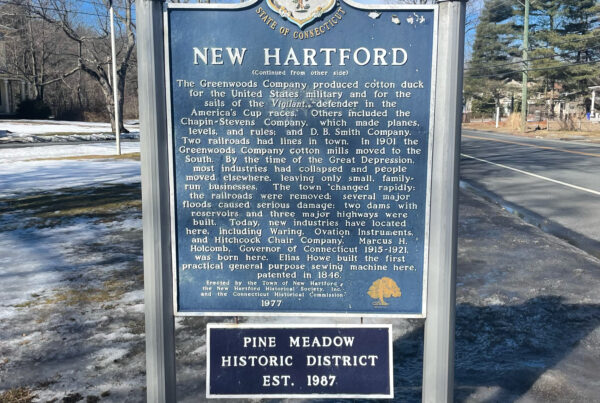
Danbury, Connecticut:
“Eight families came from Norwalk in 1685 to settle this area which the Indians called Pahquioque. They built their first homes a half mile south of here and made this green their common. The General Court in October, 1687, decreed the name ‘Danbury’ although the settlers had chosen ‘Swampfield.’ Beans and other crops helped make Danbury and inland trading center by 1750 with a population of two thousand. At the start of the American revolution this town became a hospital and supply base. General Tryon let a British force of two thousand in a raid of Danbury on April 26–27, 1777. Three young men, one a Negro, died in defense of the town near the north end of this green. The British burnt nineteen houses, a church, twenty-two barns, and many supplies.
“General David Wooster, commanding the American forces which set upon the British, was wounded at Ridgefield and died and was buried here. The street name to the west is his name. Hat making became Danbury’s for most industry after independence. Until the 1950’s, Danbury was known as the Hat City of the World. Charles Ives, famed American composer, was born here in 1874. His birthplace has been preserved by the Danbury Scott-Fanton Museum and Historical Society.”






